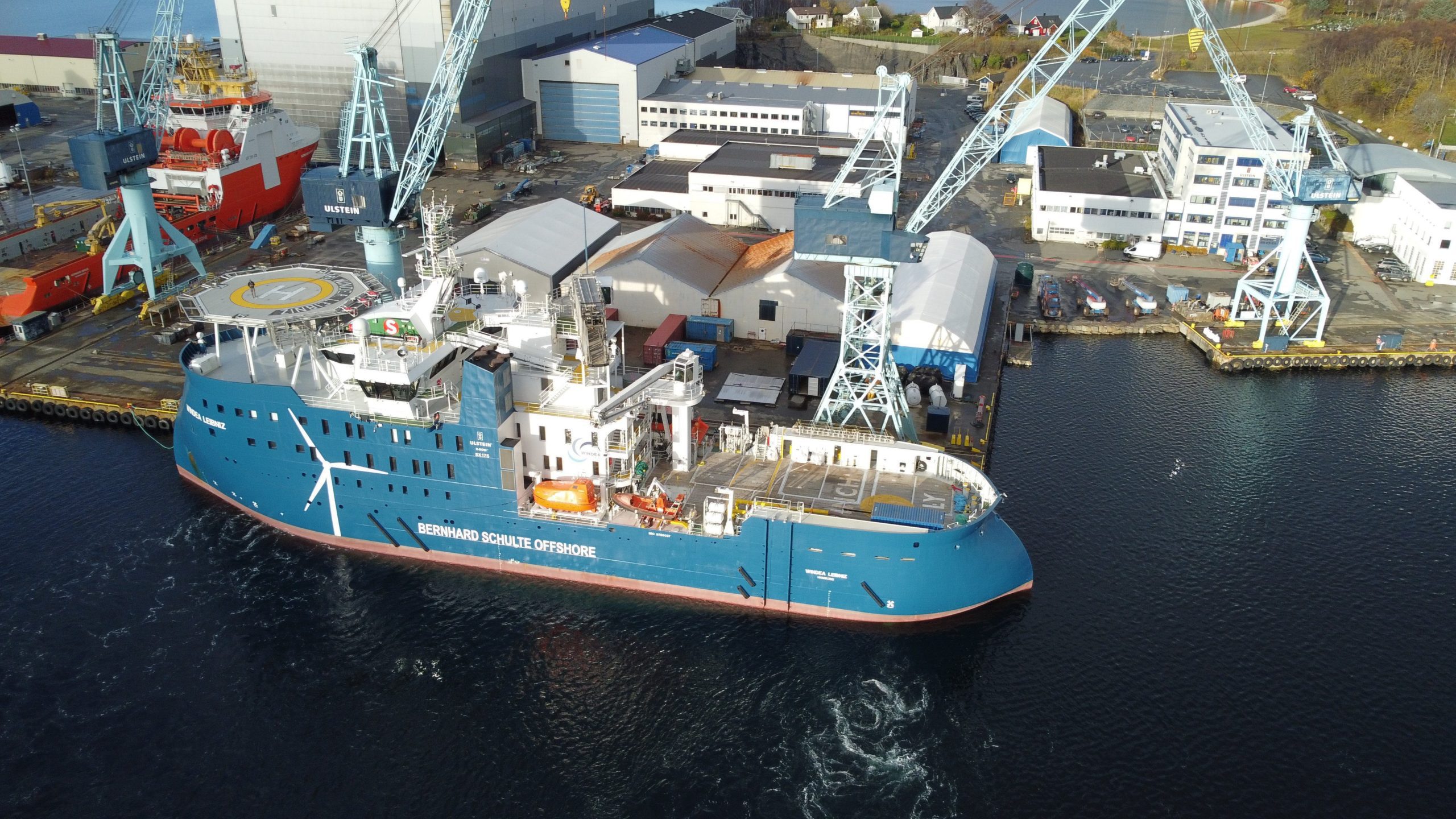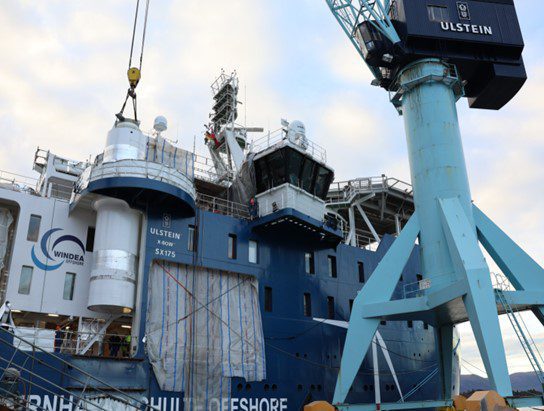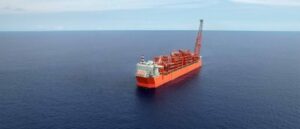
BSM managed Service Operation Vessel (SOV) “Windea Leibniz” finished on 4th of February an extensive upgrade at Ulstein Shipyard in Norway. With an increase of cabins from 60 to over 80, the vessel has transitioned from an SOV to a Commissioning Service Operation Vessel (CSOV).
Extensive reconstruction measures including shifting of the changing/drying rooms, conference rooms and day rooms were executed. Now “Windea Leibniz” can accommodate up to 85 technical staff for wind farms, service personnel and crew.
Additionally, the ship received one extra pedestal on the stern for Baltic Sea operations to complement the existing pedestal for North Sea use. The upgrade expands the operational range of “Windea Leibniz” and makes her even more attractive for the offshore market.
The second major milestone was the installation of a new height-adjustable pedestal for the motion compensating gangway, making the vessel more flexible in offshore wind farms. Now the gangway can operate in a range between 17.5 metres and 23 metres height above waterline when fully extended.
The third milestone focussed on the installation of a second pedestal for the gangway at stern. It enables “Windea Leibniz” to also sail in offshore wind parks in the Baltic Sea where service platforms are generally lower located than in the North Sea.

The upgrade of “Windea Leibniz” was timed perfectly as European governments want to expand renewable energy capacities in the Baltic and North Sea.
Last year the European Union had a capacity of approximately 15 gigawatts (GW) in offshore wind power production. Germany alone is aiming to double their capacities by 2030. According to the German government, this equals an expansion of offshore wind energy to at least 30 GW by 2030, with at least 40 GW of installed capacity by 2035 and at least 70 GW by 2045.


